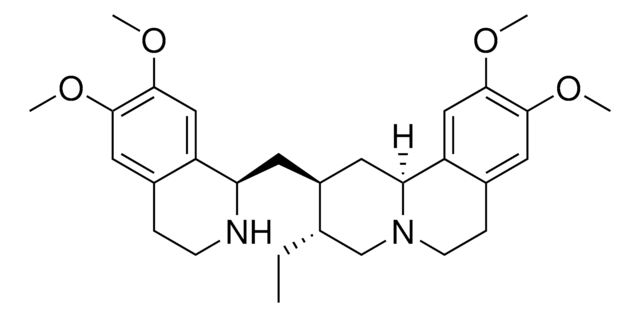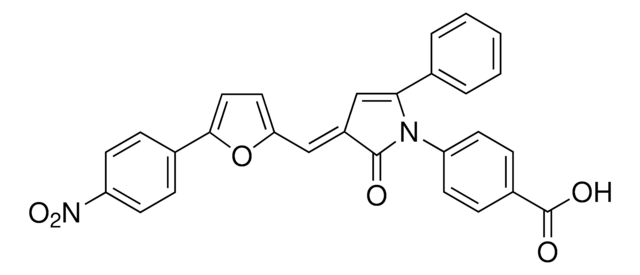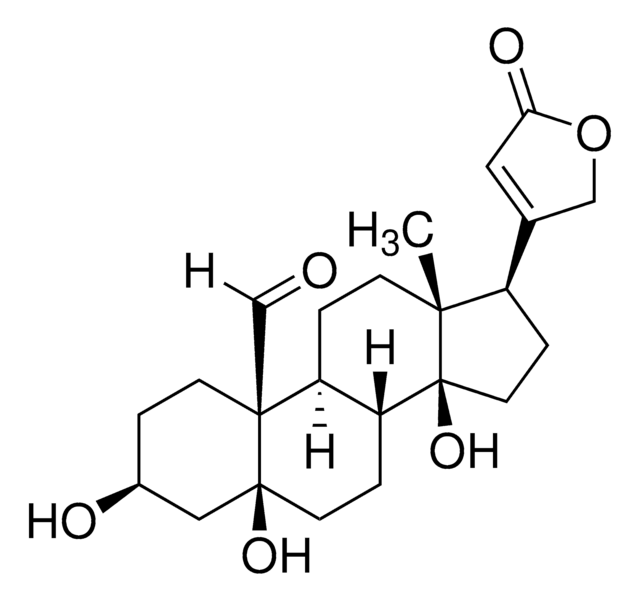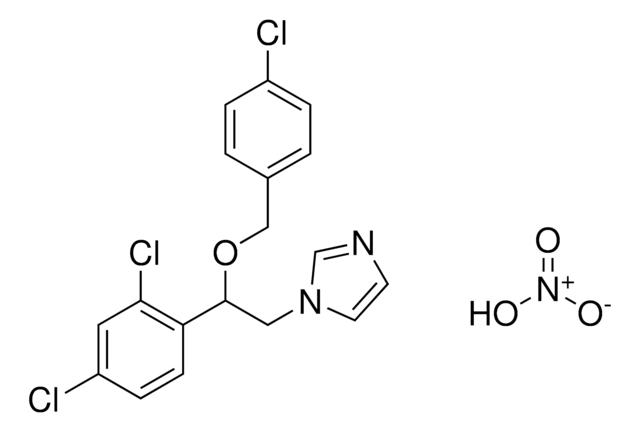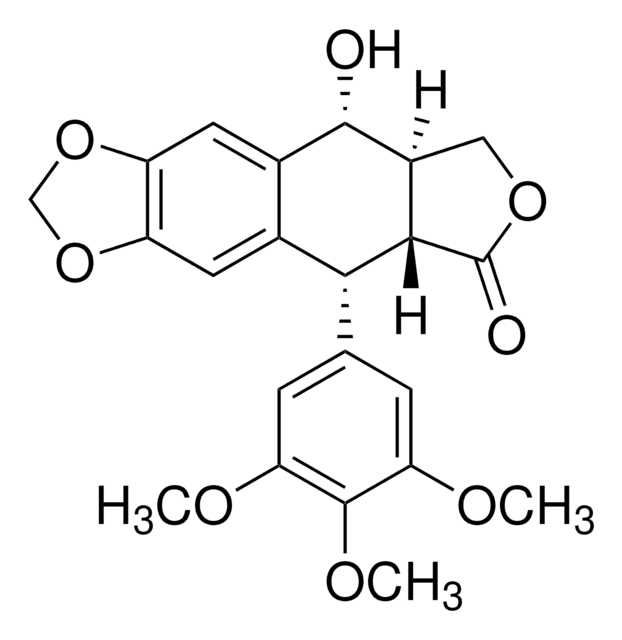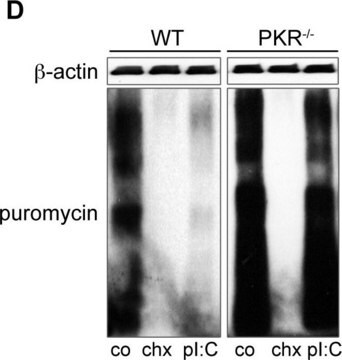E2375
Emetine dihydrochloride
Sinónimos:
6′,7′,10,11-Tetramethoxyemetan dihydrochloride
About This Item
Productos recomendados
Nivel de calidad
espectro de actividad antibiótica
parasites
Modo de acción
protein synthesis | interferes
temp. de almacenamiento
2-8°C
cadena SMILES
[H][C@@]12C[C@H](C[C@@]3([H])NCCC4=C3C=C(OC)C(OC)=C4)[C@@H](CC)CN1CCC5=C2C=C(OC)C(OC)=C5
InChI
1S/C29H40N2O4.2ClH/c1-6-18-17-31-10-8-20-14-27(33-3)29(35-5)16-23(20)25(31)12-21(18)11-24-22-15-28(34-4)26(32-2)13-19(22)7-9-30-24;;/h13-16,18,21,24-25,30H,6-12,17H2,1-5H3;2*1H/t18-,21-,24+,25-;;/m0../s1
Clave InChI
JROGBPMEKVAPEH-GXGBFOEMSA-N
¿Está buscando productos similares? Visita Guía de comparación de productos
Aplicación
- as a protein synthesis inhibitor to study its effects on human papillomavirus type 8 E2 protein half-life
- to study its effects on the stress granules assembly
- as a chain-elongation inhibitor in puromycin assay for protein synthesis
Acciones bioquímicas o fisiológicas
Características y beneficios
Palabra de señalización
Danger
Frases de peligro
Consejos de prudencia
Clasificaciones de peligro
Acute Tox. 1 Oral - Eye Irrit. 2 - Skin Irrit. 2
Código de clase de almacenamiento
6.1A - Combustible acute toxic Cat. 1 and 2 / very toxic hazardous materials
Clase de riesgo para el agua (WGK)
WGK 3
Punto de inflamabilidad (°F)
Not applicable
Punto de inflamabilidad (°C)
Not applicable
Certificados de análisis (COA)
Busque Certificados de análisis (COA) introduciendo el número de lote del producto. Los números de lote se encuentran en la etiqueta del producto después de las palabras «Lot» o «Batch»
¿Ya tiene este producto?
Encuentre la documentación para los productos que ha comprado recientemente en la Biblioteca de documentos.
Los clientes también vieron
Nuestro equipo de científicos tiene experiencia en todas las áreas de investigación: Ciencias de la vida, Ciencia de los materiales, Síntesis química, Cromatografía, Analítica y muchas otras.
Póngase en contacto con el Servicio técnico